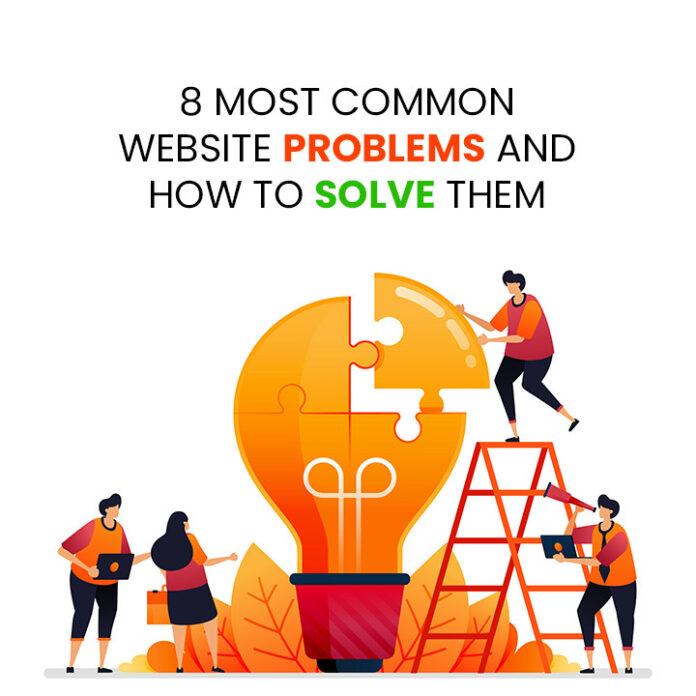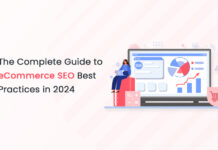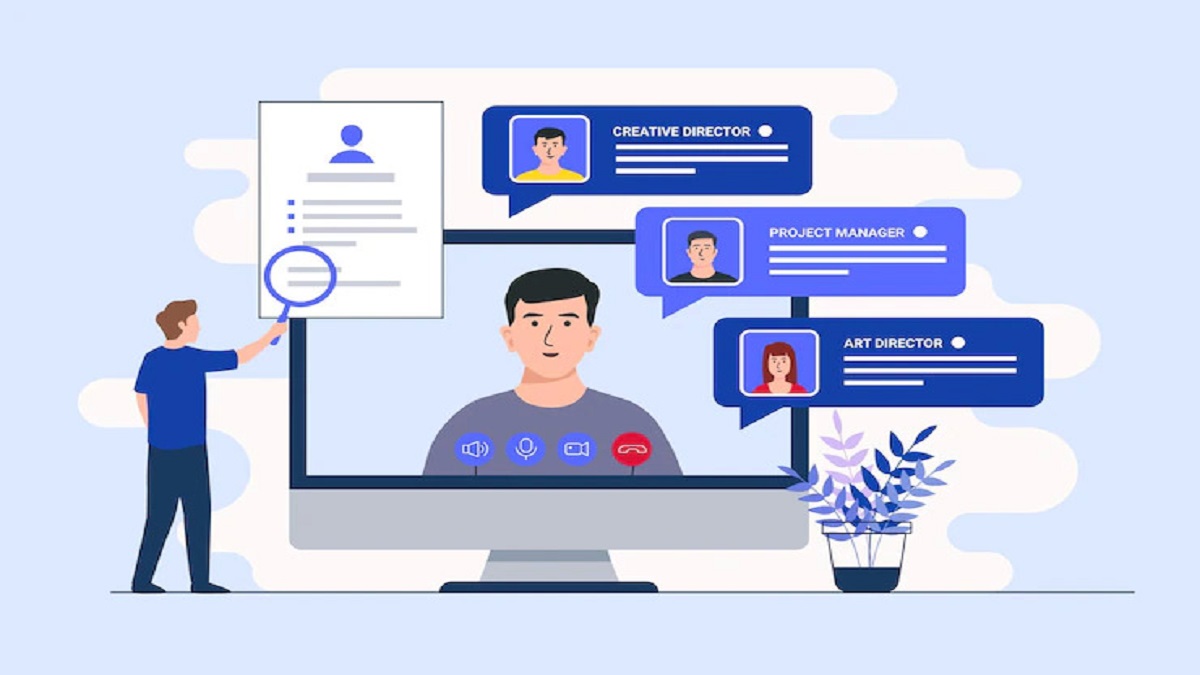In the wake of the pandemic that swept the globe, digitizing products and services moved from being a choice to a necessity for small-scale Web Design London companies. After less than a year, it’s evident that more than having an uninteresting website is needed to attract customers and differentiate yourself from your competitors.
A recent analysis has revealed that 83% of users believe convenience is more essential today than 5 years ago. So, offering a simple and quick online experience where customers can serve themselves is vital to achieving online success.
Your site must be user-friendly, contain high-quality images, and guide visitors through the user experience. To see whether your website conforms with the demands of a modern-day consumer, we’ve listed a few most common problems you might have faced with your website and the best approach to resolve the issue. For additional ideas, download our guide on website design and the most effective site management methods.
- Page Loading Speed Slow:
40% of visitor’s-intemperance the website when it doesn’t load within 4 seconds. It’s no surprise that your Web design agency London site should load quickly and easily. If not, it does, you may send potential customers directly to your competitors.
How to Fix
Page Speed tool of Google can determine your website’s loading speed. After entering your domain’s name and clicking on it, you can check your website’s overall score and the suggested adjustments to speed up the loading speed. If you need more clarification on the best way to tackle these issues, consider employing a skilled freelancer to assist you in optimizing page speed.
In any event, the most fundamental choice (if you don’t have it previously) is to reduce the size of your images and pick universal fonts, like Arial and Helvetica, instead of custom online-based fonts. Large pictures and unique fonts can take a while to display on various sizes of screens and devices.
- Not Optimized for Mobile:
More than 60% of internet search results are performed using mobile devices. So, it is vital to have a mobile-friendly website. Is crucial. Mobile-friendly websites function and look excellent and, in some cases, superior to those viewed from a computer.
How to Fix:
If you’re making changes or creating your website, select an adaptable, flexible layout that functions effectively across various mobile devices and with different angles.
- Poor UI/UX Design:
In addition to having a responsive design for your site, you should consider the overall design, accessibility, and aesthetics of the appearance of the pages. The user interface or the user experiences (UI/UX). A clutter-free layout that maximizes your brand’s color scheme and high-quality images can boost your confidence and increase your customers’ awareness.
A way to avoid an unpleasant experience on your website is to ensure customers can access your site’s self-service. From finding information about your services to making a reservation and even writing a review on your website, the capability to leave an assessment must be at the tip of your fingers.
How to Fix:
Choose a hosting service or small Web design company London software that focuses on user comfort. The ability of a site to permit customers to utilize self-service right from the start to the end of their journey is a great option to ensure a great user experience.
- Poor SEO and Content:
While the information you post on your site does not need to be high-end, however, you’ll still require it to be able to solve your client’s most frequently asked questions. It is essential to prioritize search engine optimization to help your site rank for the services you provide and boost the chance of visitors stepping on your website.
How to Fix:
Consider some of the frequent questions and concerns prospective customers will likely have regarding your company. If it’s seeking a quote, finding out more about your services, or asking about availability or anything else mentioned above, ensure your site has the answers.
Content Focus is easy to understand and contains keywords that describe your business. Verify whether your NAP (name address, name, and numbers) will be prominently featured on your site and is consistent in line with the local listing you have on your website.
- Broken Pages and Links:
Nothing is more irritating than clicking an image or hyperlink to be directed to a 404-error webpage. This is not just disconcerting for potential customers; it also needs more attention, but Google penalizes websites that contain excessively broken redirects or hyperlinks.
How to Fix:
Examine your website frequently to identify broken pages, links, and photos. This can be completed by using Google Search Console and the Google Search Console or your preferred web analytics tool and receiving the report which outlines any issues discovered in the crawling process. You can begin to make modifications, removing or redirecting any websites or links identified by the statements.
- Too Much Clutter:
The clutter on your site’s homepage or other places may not only affect how fast your site loads but is also an effective way to make your customers uncomfortable. The presence of many advertisements, images, banners, huge text chunks, and various calls-to-actions could be as ugly as a salesperson stretched to their limits.
How to Fix:
Choose the most effective method of splitting the different pages on your site and give each page a specific goal. Start with an easy-to-follow page that guides your visitors to other pages, such as an about page, a services page, contact form pricing, or gallery pages.
You can choose three ads per page with an easy call-to-action. This could include requesting an estimate, joining our newsletters, or contacting your business.
- Hidden Basic Information:
One way to annoy your clients will be to make it hard for your customers to find the essential details about your business. Address, contact information, operating hours, and even your service should be easily accessible from any location on your site.
How to Fix:
Ensure your visitors know how to contact you via your contact details on your homepage. It’s ideal to put your contact information in your footer so users can find it anywhere on your website.
- Lack of Human Element:
The absence of a human factor, especially for small-sized companies, can create an in-between between your client and you, even though they’re happy with your work.
Customers connected to an organization emotionally will spend two and a half times more than employees they are simply happy to. Your website could be an excellent way to generate an emotional connection with your brand and increase your clients’ loyalty.
How to Fix:
Incorporating human elements and other points of contact on your website is extremely simple. Begin by creating a concise but honest about your page’s About Page and a brief mission statement that describes your company’s ethical standards and core values. Add photos of your staff, and then add the area with testimonials from your clients.
Another feature that is beneficial for web pages to add could be a live chat function. It encourages customers to reach us with inquiries about anything, makes them feel valued, and will help to build lasting relationships with customers.
- Security and Certification Issues:
Finally, you must ensure your site and client information are safe and secure. Cyber attacks not only put your London web design agency employees, customers, and even your employees in danger, but they can damage the trust you’ve invested so much time creating for your business.
How to Fix:
To ensure the security of your site is maintained, it is recommended to regularly upgrade your copyrights and also check for any updates available for the equipment or software for your business. Acquiring an SSL certificate will guarantee that your customer’s data is protected when they purchase services from your website.
As you can see, it’s long gone times when your website was a tool to promote your business.
By employing these troubleshooting methods and our guide to the most effective methods to build your website and the most effective techniques, you’ll soon be on the way to establishing an online presence that is secure and pleasant for your users to visit.

Conclusion:
Fixing and repairing issues on websites is a challenging task, especially when you consider the array of tools and solutions which are readily available. However, it’s a simple and effective procedure as long as you remain focused on the most important thing, which is the client.
Suppose you put your customers at the center of your decision-making processes and ensure that your website meets your customers’ needs and provides them with the satisfaction they deserve. This results in loyalty, engagement, word-of-mouth, and conversions, allowing your business to grow and stay ahead of its rivals.
FAQS:
Do you have any issues that are frequent with websites?
These issues are as follows:
- Poor web design
- “Low” search ranking
- Mobile incompatibility
- Redirects and broken pages.
- Long loading times
- Inaccessible contact information
- Security vulnerability and breach
- Clunky sign-up processes
What exactly is website monitoring? Why is it crucial?
Monitoring your website’s performance is a method of evaluating your website’s overall security of functionality, usability, performance, and functionality. It assures that your site is simple to use while maximizing the benefits of safeguarding your visitors from security risks and improving user access.
Which tools are available to aid me in monitoring my site?
Identifying issues with your site and offering quick solutions before impacting user satisfaction is crucial. The most widely used tools to monitor websites include:
- Hotjar
- Loop11
- Pingdom
- Up Trends
- Intruder
- Status Cake
- Uptime Robot
Why is it significant to optimize a website?
The appearance and function of a site can affect the length of time customers stay on your site to explore your offerings or services (known as the length of sessions) and also if they decide to come to your site, especially if they make purchases and promote your company. Optimizing your site will provide a superior user experience, which helps you attract new customers, improve user satisfaction, and set your business apart from the other businesses in the marketplace.
















